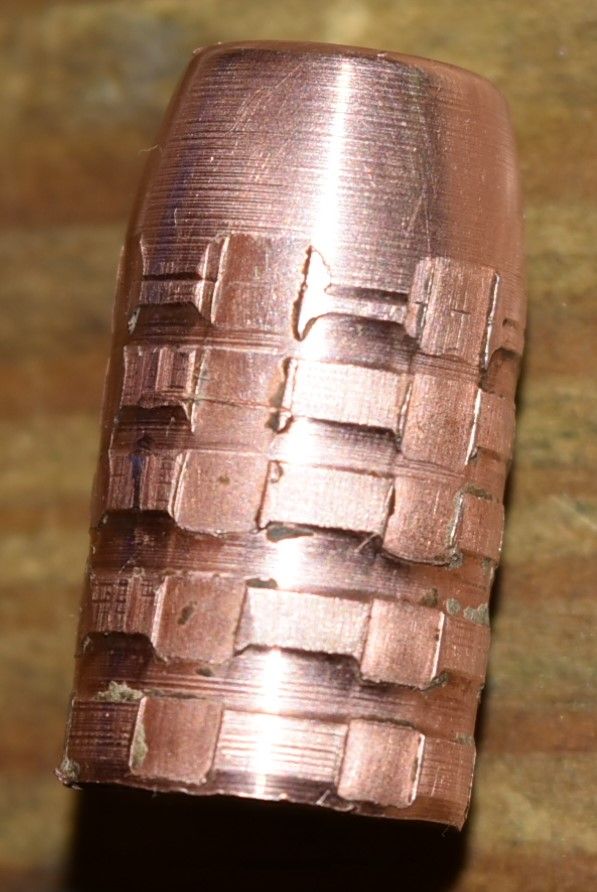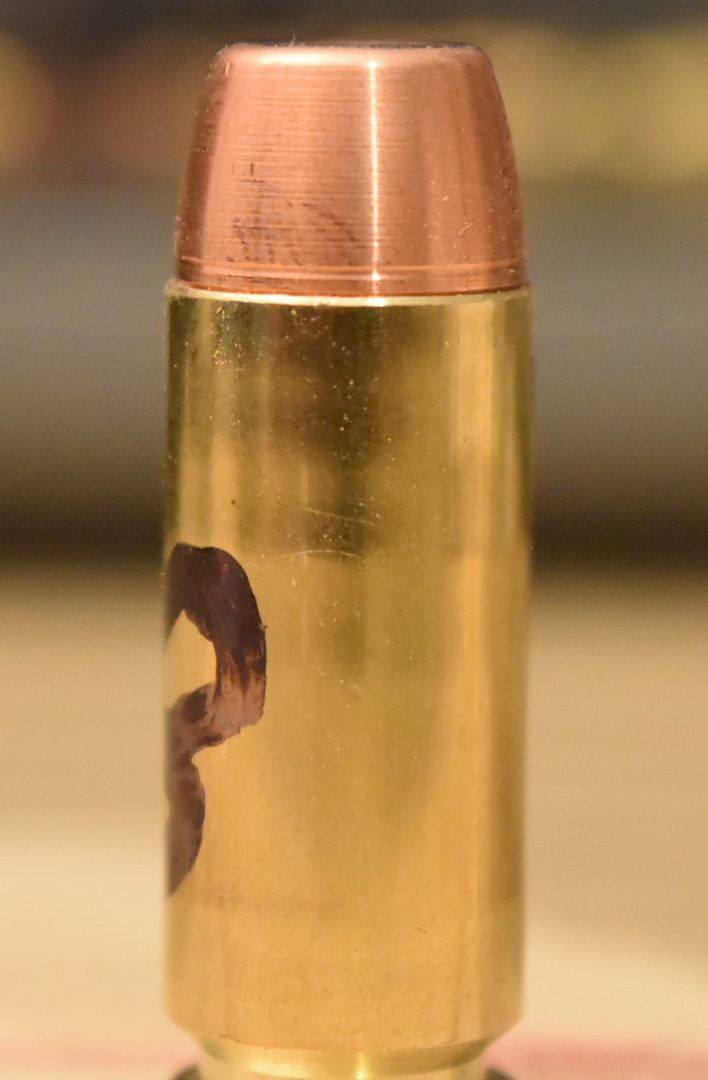On this topic, and my 10mm...using Cutting Edge solid copper bullets....the 190 grain HG solid (
https://cuttingedgebullets.com/40-190gr-handgun-solid )
I've been working up loads for that bullet lately, there is no published load data available at all. CEB told me that any load data from a reputable source with the same weight bullet would be fine...I found that to be true...I used Lee and Alliant data for 190 grain bullets and it worked fine, but made for pretty weak loads to be honest.
My G40 has a 7" barrel, and using Hornady data with 200 grain XTP's I'm getting 1,365 fps at max load...with the CEB bullet, using published 190 grain data, I got 1,278 fps with both Power Pistol and Longshot....Accurate #9 was the speed king with a HEAVILY compressed load (13.5 grains), 1,275 fps...the CEB bullet is 10 grains lighter than the 200 XTP, .040" longer...and has WAAAAAAAY less bearing surface.
Notice in the pic, all the machining marks that are still visible...showing how very little bearing surface this bullet has....this bullet was recovered after slamming into solid ground/ slate rock at 1,275 fps, penetrated 16 inches into that...the bullet is designed to NOT make contact at the bottom of the grooves in the barrel.....only the lands and the SealTite band make full contact.

What I have found is that this 190 grain bullet is safe with most 180 grain bullet data...measuring case head expansion, I hit pressure at 9 grains of Longshot (1,285 fps).
I stuffed all the Accurate #9 that would fit under it and not push the bullet back out (13.2 grains) and got 1,260 fps and no signs of pressure...haven't done it yet, but my next move is to use Accurate #9 and magnum primers, hoping to get the pressure up where its supposed to be before I run out of room.
All that is to say...what matters is bullet weight, bullet length, bullet construction, and bearing surface...all of them...
Reduce the bearing surface, the bullet is easier to push down the barrel.
Reduce the weight, the bullet is easier to start moving.
Reduce the length, you can fit more powder before hitting the pressure ceiling.
Reduce the hardness (to a point), the bullet is easier to push down then barrel.
All those things work together and in relation to one another, no loading manual can tell you that relation, thats where some common sense comes into play.



